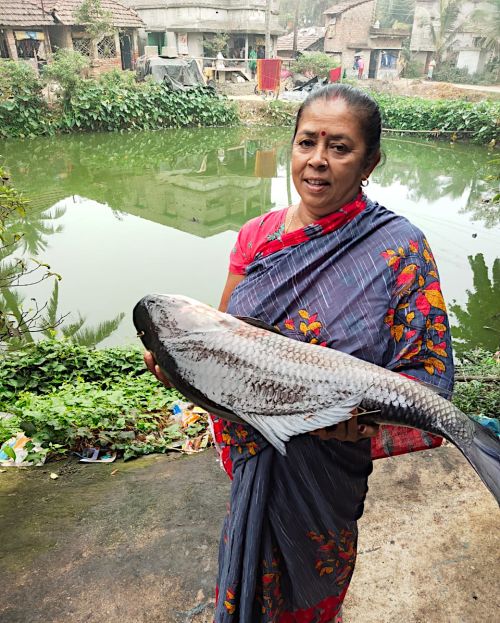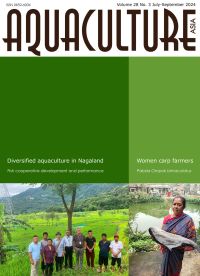Progressive women carp farmers of Haldia, Purba Medinipur, West Bengal, India
13 July 2024 | Subrato Ghosh | 648 Downloads | .pdf | 3.95 MB | Freshwater finfish, India, Livelihoods, gender and social issues
In India's north-eastern states and West Bengal, women's participation in aquaculture is around 55%. They are involved in pond fertilisation, nursery fish seed rearing, fish feeding, and harvesting. In Purba Medinipur, women practice family-based freshwater aquaculture in backyard ponds. This helps improve the health of rural households and supports their lives and livelihoods
Experts from ICAR-Central Institute for Women in Agriculture, Odisha, believe that improving rural women's access to credit and developing women-friendly aquaculture technologies can help. Involving women trainers and extension workers, and organising women aquaculture clubs, can also enhance technology transfer. This article describes the role of women in aquaculture in Haldia, Purba Medinipur, and the practices and business development of some leading women fish farmers.
Creative Commons Attribution.

